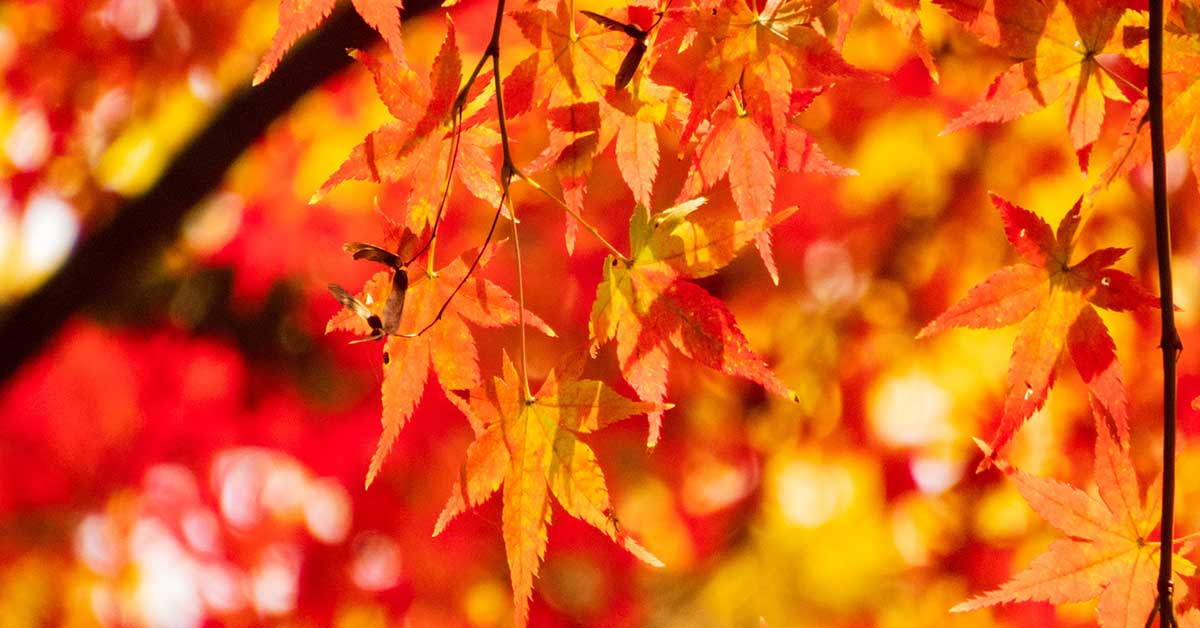Fall is the best season. The garden gets harvested and finishes up for the year, the leaves change, days get shorter, warm weather clothes come out – pretty much all my favorite stuff happens in the fall. Maybe my favorite thing about fall is the changing of the leaves, and my favorites are the trees with orange fall leaves. Don’t get me wrong, the reds, pinks, yellows, and purples thrill me as well. But I absolutely love orange fall leaves and always try to have at least one tree on my property with orange foliage every autumn. The trees on this list are great choices if you want truly orange fall foliage on your property.
Trees with orange leaves in the fall
There are a number of trees out there that have orange-ish fall leaves. They’ll start as orange and turn red, or vice-versa. Or maybe they’re a blend of both colors. This list is special though: it’s a list of trees that have truly orange foliage. Let’s look at my 8 favorite trees with orange leaves.
Sugar maple
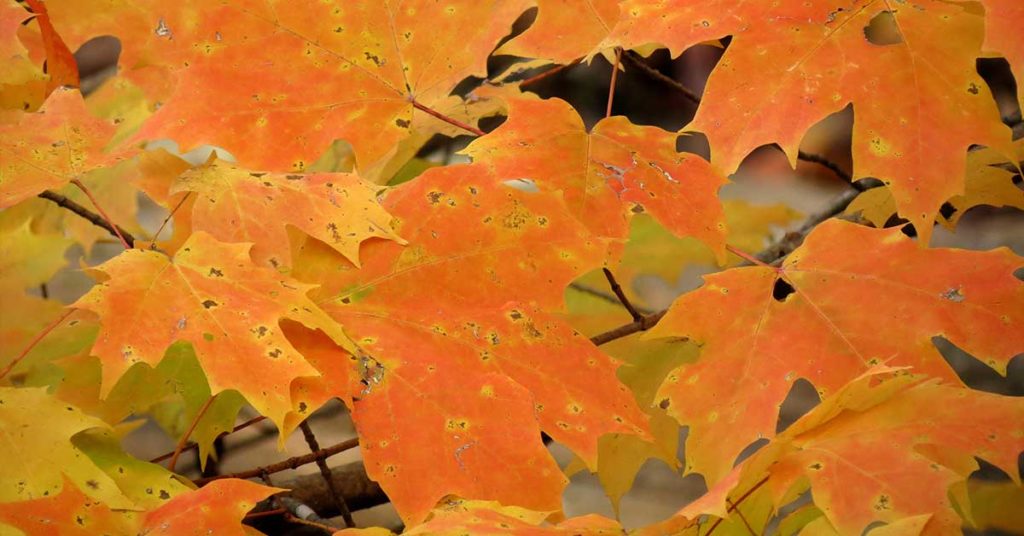
Sugar maple. Full stop. That’s the tweet. Acer saccharum is hands down my favorite tree on this list. I absolutely love maples, all maples, but not equally. Sugar maples top this list probably in part because there were several of them growing on my family’s property when I was a child. The brilliant, orange leaves of our sugar maple were a sure sign that autumn had arrived and Halloween would soon be upon us.
Sugar maples get big, growing up to 80 feet tall and spreading up to 60 feet wide. They are hardy to zones 3-8 and native to eastern North America.
Serviceberry
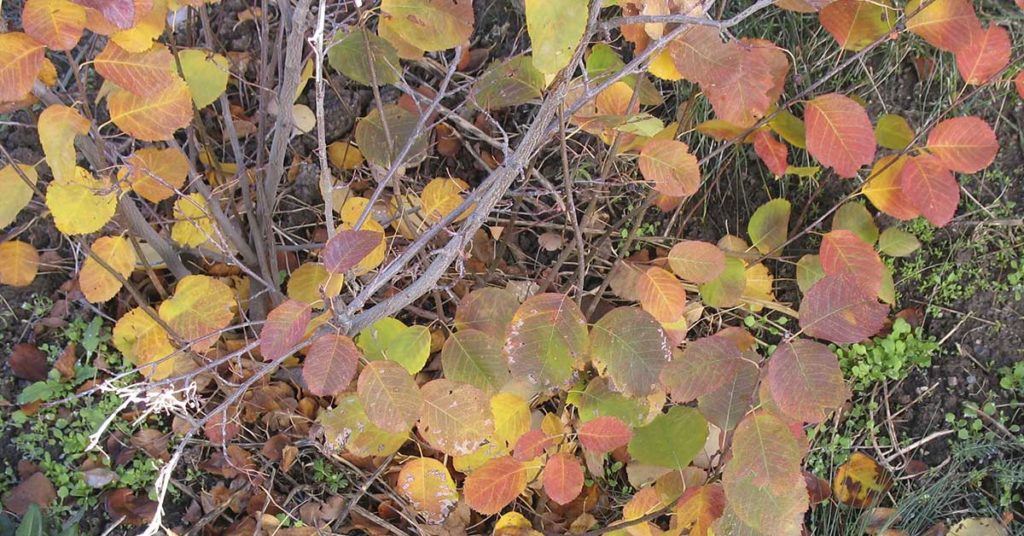
Serviceberries (Amelanchier) is a genus of about 20 species of shrubs and small trees that produce edible berries from late June through July and explode in stunning, orange leaves in the autumn months. These trees tend to be shorter and squat in shape, with the largest species growing up to 20 feet tall and 15 feet wide. Serviceberry trees thrive in hardiness zones 2 through 9 and are native to the Dakotas, Minnesota, Iowa, Missouri, and throughout the eastern United States, excluding southern and southeastern states.
Japanese persimmon
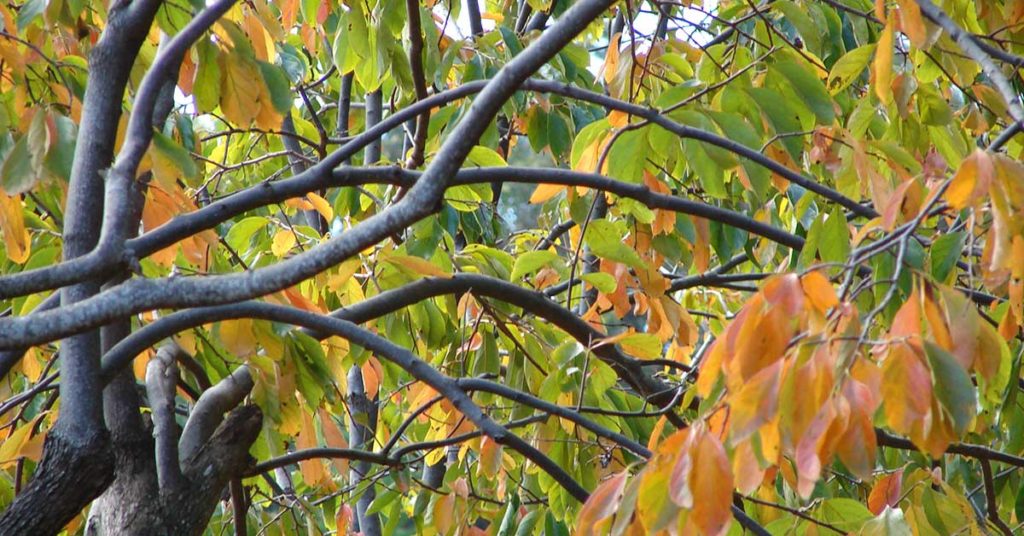
The Japanese persimmon, or Diospyros kaki, is an edible fruit tree widely known and revered in Japan. It is an orange-colored fruit with a firmer texture than many other varieties of persimmons. The Japanese persimmon is known for its sweet, slightly tart flavor, and its flesh is very juicy. The skin of the fruit is thin, and when ripe it can be easily peeled off. The Japanese persimmon is incredibly versatile, and can be eaten fresh or dried, used for baking and desserts, or made into juices and jams. Its health benefits include high levels of Vitamin C and carotenoids. It erupts in orange leaves in the fall.
Japanese maple
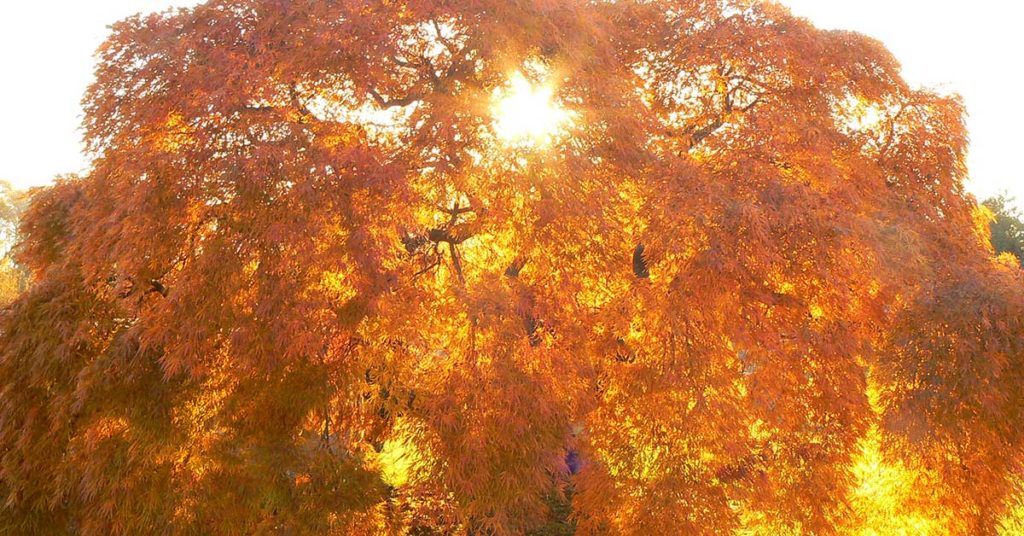
When it comes to red and orange fall leaves, maples absolutely slay. Acer palmatum “Orange Dream”, also known as Orange Dream Japanese Maple, is probably the best variety of Japanese maple trees to plant if you’re wanting orange fall foliage. It’s a shorter, slow-growing tree that tops out at around 10 feet tall.
Japanese maples are hardy in zones 5-8 and grow well in full sun or part shade. They prefer moist, well-drained, acidic or neutral soil. Japanese maples are native to Japan, central China and Korea.
Smoke tree
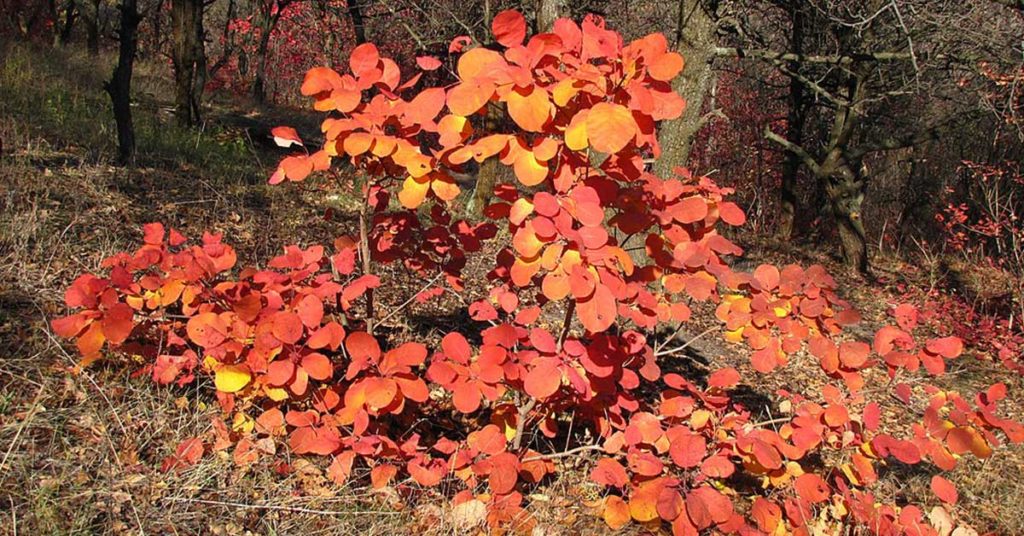
The smoke tree (Cotinus) is a nifty little tree that grows up to 30 feet tall and erupts in orange, almost pinkish leaves in the fall. The name smoke tree comes from the smokey appearance of its leaves in the fall. It’s hardy to zones 4-8 and native to Kentucky, Tennessee, and northern Alabama west to Oklahoma and small portions of Texas.
This tree in particular is a toughie. It grows in rocky, poor soil, making it ideal if you don’t have the best soil on your property. In the summer, you’ll enjoy the shade cast by this tree’s large, green, lobe-shaped leaves.
Hickory
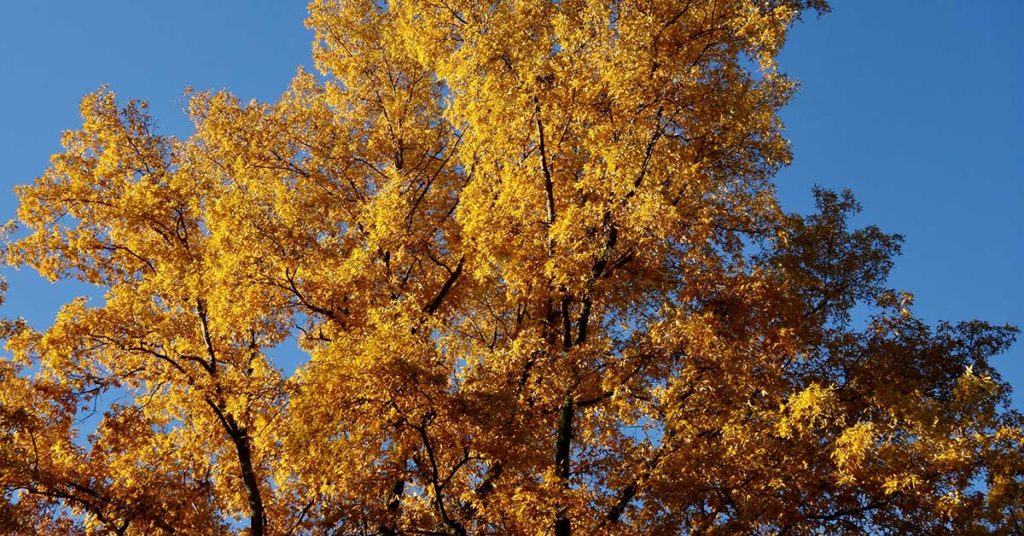
If you want orange fall leaves, you really can’t go wrong with the hickory tree. There are 19 documented species of hickory tree and they all erupt into golden orange leaves every autumn. These trees are massive, growing up to 100 feet tall with branches up to 25 feet long. That’s huge! Hickory trees produce edible nuts too, which is hard to beat.
This lovely orange fall tree is hardy in zones 4-8. Some species are native to China, Indochina, and India. Twelve species of hickory tree are native to the United States, four are native to Mexico, and four are native to Canada. There’s a hickory tree for you, whether you live in Asia or North America.
Dogwood
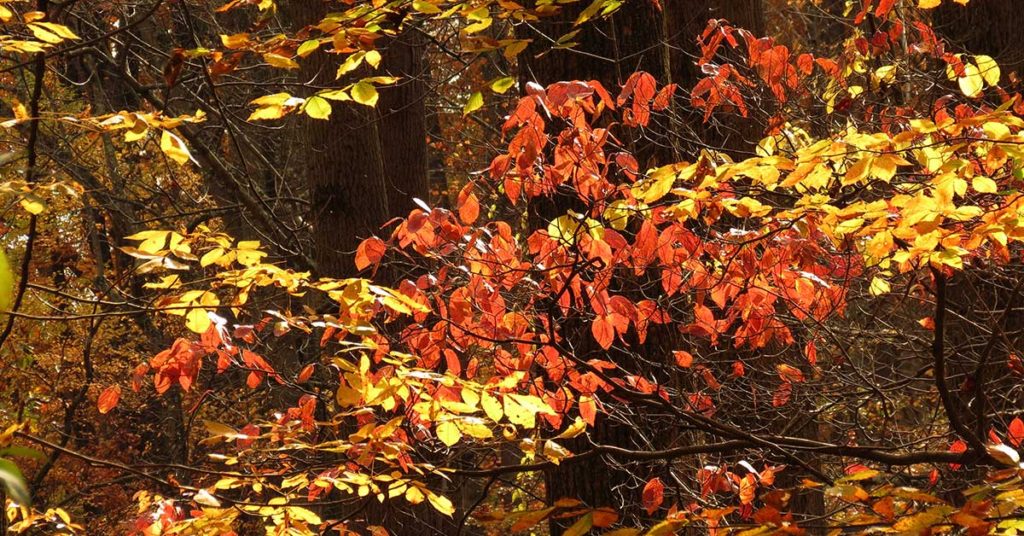
Dogwood trees (Cornus) are well known and adored for their white, yellow, and pink flowers as well as their dense, green foliage in the summer. But one of the lesser-known qualities of the dogwood are its fiery orange leaves. There are as many as 60 species of dogwood in the Cornus genus, each a little bit different. Many turn orange in the fall while others have leaves that turn red and purple each autumn.
Dogwood trees are a hardy, mid-sized tree that grows up to 25 feet tall and grows well in hardiness zones 3 to 8. Dogwood trees are native to large swaths of North America and Asia.
Sumac
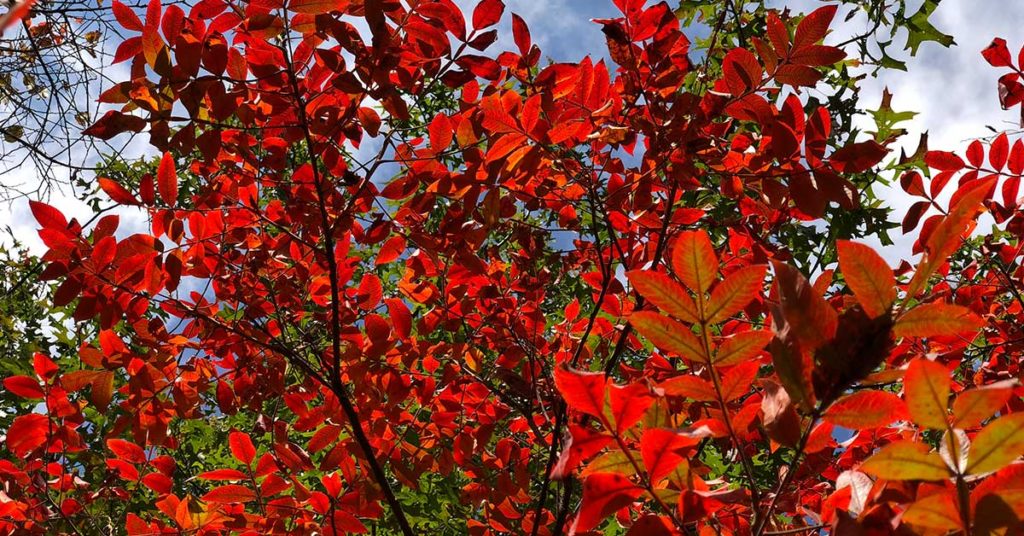
Rhus, otherwise known as Sumac, get a bit of a bad rap due to the toxicity of some of the species in this genus of flowering plant. The Rhus genus includes poison ivy, poison oak, and poison sumac. But not all sumac is toxic, some species are used as a spice, as a dye, and in medicine. Sumac trees have round, lobe-shaped leaves that are deep green during the summer and turn orange in the fall.
Sumacs are native to temperate and subtropical parts of East Asia, Africa, and North America. They tend to be hardy to zones 2-9. They can grow up to 30 feet tall and different species erupt in orange and red fall foliage every autumn.
